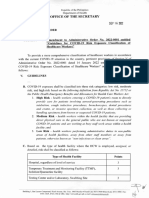0% found this document useful (0 votes)
10 views8 pagesAI Module5.2
The document discusses the opportunities and risks of AI for society, emphasizing the need for ethical frameworks to guide AI development and implementation. It outlines four key opportunities AI presents, along with associated risks, and proposes a unified framework of five core ethical principles: beneficence, non-maleficence, autonomy, justice, and explicability. Additionally, it highlights the importance of embedding these principles in AI practices and offers recommendations for creating a socially responsible AI landscape.
Uploaded by
arjunmax1994Copyright
© © All Rights Reserved
We take content rights seriously. If you suspect this is your content, claim it here.
Available Formats
Download as PDF, TXT or read online on Scribd
0% found this document useful (0 votes)
10 views8 pagesAI Module5.2
The document discusses the opportunities and risks of AI for society, emphasizing the need for ethical frameworks to guide AI development and implementation. It outlines four key opportunities AI presents, along with associated risks, and proposes a unified framework of five core ethical principles: beneficence, non-maleficence, autonomy, justice, and explicability. Additionally, it highlights the importance of embedding these principles in AI practices and offers recommendations for creating a socially responsible AI landscape.
Uploaded by
arjunmax1994Copyright
© © All Rights Reserved
We take content rights seriously. If you suspect this is your content, claim it here.
Available Formats
Download as PDF, TXT or read online on Scribd
/ 8





















































































